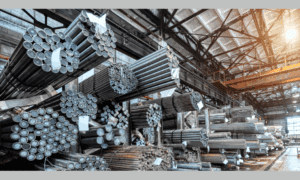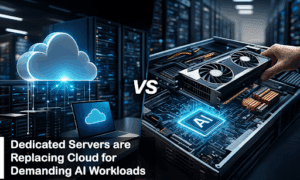Artificial Intelligence (AI) is reshaping various industries, and agriculture is no exception. In his article, Rajnish Jain explores how AI is revolutionizing farming practices, focusing on precision agriculture and farm optimization. This transformation combines cutting-edge technologies such as machine learning, IoT, and data analytics to enhance crop management and optimize farm operations, ensuring sustainable and efficient food production.
A New Era in Agricultural Practices
The agricultural sector faces growing challenges, including climate change, resource depletion, and the need to feed a rapidly increasing global population. AI-powered solutions offer a promising pathway to overcoming these challenges, particularly in regions where agriculture is the primary livelihood. The integration of AI into farming practices, through machine learning algorithms and computer vision, is helping farmers make data-driven decisions that optimize crop yields while conserving resources.
The Role of Precision Farming Technologies
At the core of this AI transformation lies precision farming technologies. Remote sensing, satellite-based imaging, and drones are revolutionizing field monitoring. These tools allow farmers to track crop health, soil moisture, and other critical parameters across vast agricultural areas. By employing multispectral and hyperspectral imaging, these systems provide real-time data, enabling farmers to identify issues such as pest infestations or water stress long before they are visible to the human eye.
Drones provide centimeter-level accuracy, allowing farmers to assess crop growth patterns, detect pest problems, and analyze weather damage. This has reduced crop scouting time by up to 75%.
Smart Equipment and Autonomous Systems
In addition to monitoring technologies, AI-driven smart equipment and autonomous machinery are playing a pivotal role in modern farming. Variable Rate Technology (VRT) systems allow for precise control over the application of fertilizers, pesticides, and irrigation, adjusting in real-time based on soil conditions and crop needs. This reduces resource waste, lowers input costs, and enhances efficiency.
Autonomous machinery, such as tractors and harvesters, optimize resource use and improve productivity, especially in areas with labor shortages.
Data Analytics and Decision Support Systems
Data is at the heart of AI-driven farming solutions. With farms generating vast amounts of data from various sources—weather stations, satellite imagery, and sensor networks—AI-powered decision support systems transform raw data into actionable insights. These systems use predictive analytics to forecast weather patterns, predict crop yields, and anticipate equipment malfunctions.
Farm management systems are evolving to integrate these data streams into comprehensive platforms. These systems recommend optimal farming practices, ensuring more efficient operations and better resource management.
Environmental and Economic Impact
AI-driven technologies in agriculture promise significant environmental and economic benefits. These systems help reduce the environmental footprint of farming by optimizing resource usage, such as water and fertilizers. With AI’s help, farmers can reduce water consumption by up to 60% compared to traditional methods and cut fertilizer usage by 20-40%, all while maintaining or improving crop yields.
The economic benefits are substantial. Initial investments in precision farming technologies can be high, but the return on investment (ROI) is typically realized within a few years. Reduced labor costs, better resource management, and improved yield quality contribute to long-term financial savings.
Overcoming Challenges and Future Prospects
Despite the promise, challenges remain in the widespread adoption of AI in agriculture. Technical complexity, infrastructure requirements, and the digital divide between rural and urban areas can hinder the implementation of these systems. Moreover, data security and privacy concerns must be addressed as farming operations become increasingly digitized.
Emerging technologies, such as blockchain for supply chain transparency and the integration of AI with quantum computing, are expected to overcome these barriers, opening new possibilities for sustainable and efficient farming.
In conclusion, the integration of AI into precision agriculture is reshaping the future of farming. Through advanced technologies like drones, machine learning, and IoT, agriculture is becoming more efficient, sustainable, and economically viable. The ability to optimize resources, reduce waste, and improve yields will help meet the demands of a growing global population and promote environmental sustainability. As AI-driven farming technologies continue to mature, their impact on food production systems will expand, creating more resilient agricultural practices and contributing to global food security. This transformation, highlighted by Rajnish Jain, points to a promising future for agriculture.



































